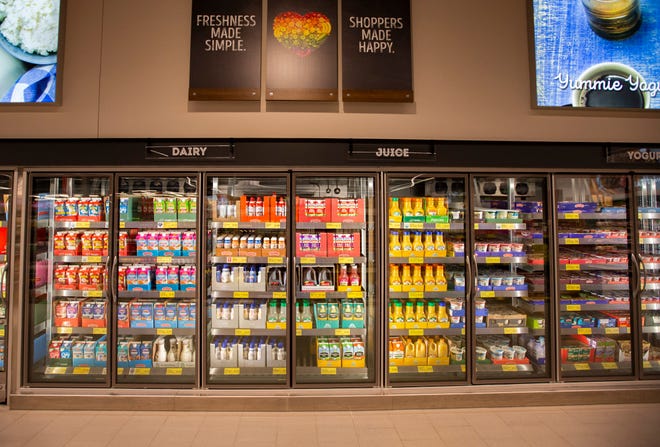
Educating people to live healthily on a budget is an important part of the mission of the UF/IFAS Extension Family Nutrition Program (FNP), and this goal has never been more relevant as grocery shoppers see higher prices on the shelves.
“Yes, you can make and prepare healthy, easy foods and meals without spending a lot of money,” said Dr. Sharon Austin, adult programs specialist for FNP. “You do not have to be a TV celebrity chef or expert food shopper to save money making healthy food.”
One option for recipe-hunters can be found on the FNP website: familynutritionprogram.org/recipes.
Presto, pesto:Got herbs? Make fresh pesto straight from the garden | The Kitchen Goddess
Salad recipe:Summer special: Put this Classic Southern 7-Layer Pea Salad on the picnic table
Broccoli salad:Southern Broccoli Salad a tried-and-true hit with a crowd |Rigsby
Dr. Austin shares a few key tips for grocery shoppers who may be feeling the pinch:
1. Follow the ‘Plan It, Shop It, Make It’ outline.
Plan a week of meals and prepare a grocery list. Look into sales and seasonal produce – from sources like printed or online grocery store flyers – as you make your plans. Save money by making fewer trips to the store, especially while fuel costs are also high.
Check your cabinets, refrigerator and freezer for food you already have. The free “Shop Simple with MyPlate” app (myplate.gov/myplate-kitchen on your phone or computer) is great for planning your meals and finding budget-friendly recipes.
Shop smart by sticking to that grocery list. Be sure not to shop while hungry or in a hurry, which may help you buy less food and make healthier food choices. Think about farmer’s markets, farm stands and discount retail stores for lower-cost foods, many of which will accept SNAP and WIC benefits. (The “Shop Simple with MyPlate” app has a feature to find farmers markets and local retailers that accept SNAP benefits.)
Making meals at home saves money. Stretch your ingredients and reduce waste by eating leftovers or reusing them in different dishes. Vegetables can add variety to soups, salads and stews. Add fruit to cereal, smoothies and salads. Use a cooked protein, like chicken, in several ways, from casseroles to salads. Include lower-cost vegetable protein items like beans, peas and lentils in your meals.
2. Compare prices on the shelf tags.
“Retail price” shows the price you pay for the food item, and “unit price” tells you how much a food costs per pound, ounce or quart. The unit price is most useful for comparing the cost of similar items, for example, two kinds of canned beans.
3. Shelf-stable foods are always great to have available.
Especially since it’s now hurricane season, cnsider canned fruits, vegetables, tomato products, beans, fish and milk. Complete your meals with grains such as cereals, pasta and rice, and remember that flavoring your dishes with dried herbs can help you avoid adding extra salt. Other pantry fillers include baking products, dried fruits and nuts, powdered milk, vinegar and healthy oils like canola or olive.
4. All types of produce count for your fruit and vegetable intake.
Per MyPlate, fruits and vegetables should together make up half your plate. Be sure to check the label for added salt and sugars in frozen and canned options.
5. Generic products are more budget friendly.
Name-brand products are more widely known, eye-catching, and are often associated with trademarked products, but they also tend to be higher-cost than generic options. The difference in quality of these food products depends upon the product you are buying.
Other resources
Never miss a story: Subscribe to the Tallahassee Democrat using the link at the top of the page.




